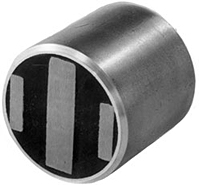
Ceramic magnets are used in a variety of applications. Also known as ferrite magnets, they are found in speakers, appliances, motors, computer hardware, conveyor systems, sorting and recycling systems, and more. Like all magnets, however, they have a maximum temperature at which they can operate. To better understand the maximum temperature of ceramic magnets, keep reading.
The Basics of Ceramic Magnets
There are several different types of magnets, including electromagnets, rare-earth magnets and ceramic magnets. Electromagnets leverage an electrified coil to produce a magnetic field. Rare-earth magnets feature rare-earth minerals, such as neodymium, to produce a magnetic field.
Ceramic magnets are made of barium ferrite or strontium ferrite. These materials are pressed and sintered at high temperatures — similar to how ceramics are made. The end result is a hard magnet that’s resistant to demagnetization and corrosion.
Understanding the Maximum Temperature of Ceramic Magnets
The maximum temperature of ceramic magnets is the maximum temperature at which they can be exposed without losing their magnetic strength. Heat can affect a magnet’s ability to produce a magnetic field. It disturbs the alignment of magnetic domains.
Ceramic magnets have magnetic domains, which are regions with grouped together atoms. These domains become misaligned, the ceramic magnet will become weaker. In some cases, severe misalignment can cause the ceramic magnet to permanently lose its magnetic field.
The maximum temperature or maximum operating temperature represents the hottest temperature to which a ceramic magnet can be exposed without losing its magnetic strength. Most ceramic magnets have a maximum temperature of roughly 300 to 500 degrees Fahrenheit. When exposed to these temperatures, they will become weaker.
Maximum Temperature vs Curie Temperature: What’s the Difference
It’s important to note that maximum temperature isn’t the same as Curie temperature. The Curie temperature represents the temperature at which a ceramic magnet will completely lose its magnetic field.
Ceramic magnets can handle at least some heat, which is reflected by their maximum temperature. As the heat increases, though, they will experience greater misalignment of their magnetic domains. Eventually, ceramic magnets will become completely demagnetized. The Curie temperature is the temperature at which a ceramic magnet will no longer produce or maintain a magnetic field.
Most ceramic magnets have a Curie temperature of over 800 degrees Fahrenheit. As long as they stay under this temperature, they will still produce a magnetic field. The magnetic field may be weaker, but it will still attract ferrite objects nearby.
